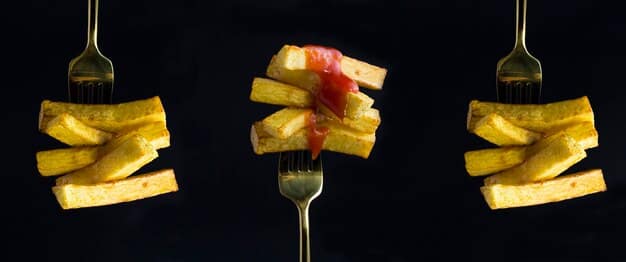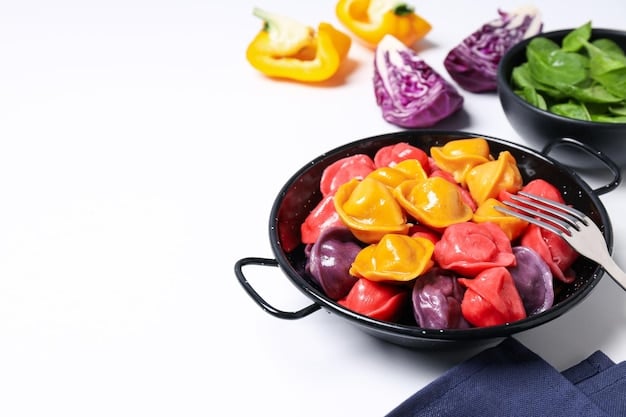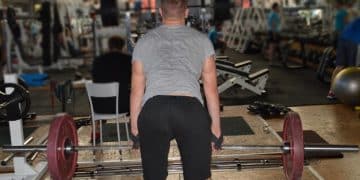Is Air Frying Healthy? 3 Tasty Recipes & Nutritional Guide (2025)

Air frying can be a healthy alternative to traditional frying, reducing fat content while maintaining a crispy texture; this article explores the benefits, potential drawbacks, and includes three nutritious air fryer recipes with complete nutritional information.
Is air frying healthy? 3 Delicious Air Fryer Recipes with Nutritional Breakdowns (2025 Update). Let’s dive into the crispy world of air frying and discover its nutritional ups and downs, plus some amazing recipes to try!
The Rise of Air Frying: A Healthier Way to Fry?
Air fryers have become a kitchen staple, promising all the crispiness of traditional frying with significantly less oil. But is it just hype, or is there real nutritional value to air frying? Let’s find out.
What is Air Frying and How Does it Work?
Air frying uses hot air circulation to cook food, mimicking the effect of deep frying without submerging food in oil. This results in a crispy exterior and tender interior.
- Reduced Oil Consumption: Air fryers use little to no oil, drastically reducing the fat content of food.
- Faster Cooking Times: Air fryers typically cook food faster than traditional ovens.
- Versatile Cooking: Air fryers can cook a variety of foods, from vegetables to meats and even desserts.
The key to air frying’s health benefits lies in this reduced oil usage. By avoiding excess fat, you’re cutting down on calories and potentially harmful substances formed during deep frying.
Health Benefits of Air Frying
Beyond just being a kitchen gadget, air frying offers several potential health benefits when compared to traditional frying methods.

Lower Fat Content
One of the most significant benefits of air frying is the reduction in fat content. By using little to no oil, you can significantly decrease the overall fat percentage in your meals.
A study published in the “Journal of Food Science” found that air frying can reduce the fat content of French fries by up to 80% compared to deep frying.
Reduced Calorie Intake
Since fat is calorie-dense, reducing fat intake also leads to a decrease in overall calorie consumption. This can be beneficial for weight management and overall health.
Fewer Harmful Compounds
Deep frying can create harmful compounds like acrylamide, which forms when starchy foods are cooked at high temperatures. Air frying produces significantly less of this compound.
While air frying is a healthier option, it’s not a magic bullet. It’s essential to consider the overall composition of your diet and choose healthy ingredients to cook in the air fryer.
Potential Drawbacks of Air Frying
While air frying boasts many health benefits, it’s essential to consider the potential drawbacks and limitations to ensure it’s a healthy choice for you.
Nutrient Loss
Like any cooking method that involves high heat, air frying can lead to some nutrient loss in certain foods, particularly in water-soluble vitamins like vitamin C.
- Cooking Temperature: High temperatures can degrade vitamins and antioxidants.
- Cooking Time: Longer cooking times can exacerbate nutrient loss.
- Food Type: Some foods are more susceptible to nutrient loss than others.
Acrylamide Formation
Although air frying produces less acrylamide than deep frying, it can still form, especially when cooking starchy foods at high temperatures. Keep temperature low and cooking time as short as possible.
Not a Substitute for a Healthy Diet
It’s crucial to remember that air frying is a cooking method, not a dietary solution. While is can be a healthy choice, it doesn’t automatically make unhealthy foods healthy.
To maximize the health benefits of air frying, focus on cooking whole, unprocessed foods and limiting your intake of fried foods, regardless of the cooking method.
3 Delicious and Healthy Air Fryer Recipes
Now that we’ve covered the health aspects of air frying, let’s dive into some delicious and healthy recipes you can make using your air fryer.

Recipe 1: Crispy Air Fryer Chicken Breast
This recipe offers a healthier take on fried chicken, using minimal oil and simple seasonings.
Ingredients:
- 2 boneless, skinless chicken breasts
- 1 tablespoon olive oil
- 1 teaspoon paprika
- 1/2 teaspoon garlic powder
- 1/4 teaspoon salt
- 1/4 teaspoon black pepper
Instructions:
- Preheat air fryer to 375°F (190°C).
- In a bowl, mix olive oil, paprika, garlic powder, salt, and pepper.
- Rub the seasoning mixture onto the chicken breasts.
- Place chicken breasts in the air fryer basket, ensuring they are not overlapping.
- Cook for 15-20 minutes, flipping halfway through, until the chicken is cooked through and the internal temperature reaches 165°F (74°C).
Nutritional Breakdown (per serving): Calories: 220, Protein: 35g, Fat: 8g, Carbs: 2g
Recipe 2: Air Fryer Sweet Potato Fries
A healthier alternative to traditional French fries, these sweet potato fries are packed with nutrients and flavor.
Ingredients:
- 2 medium sweet potatoes, peeled and cut into fries
- 1 tablespoon olive oil
- 1/2 teaspoon cinnamon
- 1/4 teaspoon salt
Instructions:
- Preheat air fryer to 400°F (200°C).
- In a bowl, toss sweet potato fries with olive oil, cinnamon, and salt.
- Place sweet potato fries in the air fryer basket, ensuring they are not overcrowded.
- Cook for 12-15 minutes, shaking the basket halfway through, until the fries are tender and slightly crispy.
Nutritional Breakdown (per serving): Calories: 180, Protein: 2g, Fat: 7g, Carbs: 28g
Recipe 3: Air Fryer Broccoli with Lemon
This simple side dish transforms broccoli into a crispy, flavorful delight.
Ingredients:
- 1 head of broccoli, cut into florets
- 1 tablespoon olive oil
- 1 tablespoon lemon juice
- 1/4 teaspoon salt
- 1/4 teaspoon black pepper
Instructions:
- Preheat air fryer to 350°F (175°C).
- In a bowl, toss broccoli florets with olive oil, lemon juice, salt, and pepper.
- Place broccoli in the air fryer basket.
- Cook for 8-10 minutes, until the broccoli is tender and slightly crispy.
Nutritional Breakdown (per serving): Calories: 70, Protein: 3g, Fat: 5g, Carbs: 6g
These recipes are just a starting point. Feel free to experiment with different seasonings and ingredients to create your own healthy air fryer masterpieces.
Tips for Healthy Air Frying
To maximize the health benefits of air frying, consider the following tips:
Choose Healthy Ingredients
Start with whole, unprocessed foods like vegetables, lean proteins, and fruits. Avoid processed foods high in sodium, sugar, and unhealthy fats.
Use Oil Sparingly
While air frying requires less oil than traditional frying, it’s still important to use it sparingly. A light coating is usually sufficient to achieve a crispy texture.
- Spray Oil: Use a spray bottle to evenly coat food with a thin layer of oil.
- Choose Healthy Oils: Opt for healthy oils like olive oil, avocado oil, or coconut oil.
- Avoid Overcrowding: Overcrowding the air fryer basket can prevent food from cooking evenly and becoming crispy.
Monitor Cooking Time and Temperature
Avoid overcooking food, as this can lead to nutrient loss and the formation of harmful compounds. Use a food thermometer to ensure food is cooked to a safe internal temperature.
By following these tips, you can enjoy the deliciousness of air-fried foods while maximizing their nutritional benefits.
| Key Point | Brief Description |
|---|---|
| ✅ Less Fat | Air frying uses significantly less oil than traditional frying. |
| 🔥 Fewer Calories | Reduced fat leads to lower calorie intake, aiding weight management. |
| 🧪 Reduced Acrylamide | Air frying produces less harmful acrylamide compared to deep frying. |
| 🥦 Nutrient Retention | Proper air frying can help retain essential nutrients in foods. |
Frequently Asked Questions
▼
Yes, air frying is generally healthier than deep frying because it uses significantly less oil, reducing fat content and calorie intake in your meals. This can lead to better weight management and overall health benefits.
▼
It’s best to use oils with a high smoke point, such as olive oil, avocado oil, or coconut oil, in your air fryer. Avoid oils with low smoke points to prevent smoking and potential flavor issues in your food.
▼
Yes, most air fryers are easy to clean. Many models come with dishwasher-safe parts, and the non-stick surfaces make hand washing simple. Regular cleaning prevents buildup and maintains optimal performance.
▼
Air frying can enhance the taste of food by creating a crispy exterior while keeping the inside tender. The flavor largely depends on the seasonings and ingredients you use, offering a similar taste to deep-fried foods.
▼
Air fryers are versatile and can replace some functions of ovens, deep fryers, and toaster ovens. They are particularly useful for cooking smaller portions quickly and efficiently, saving time and energy in the kitchen.
Conclusion
In conclusion, air frying healthy? 3 Delicious Air Fryer Recipes with Nutritional Breakdowns (2025 Update) is a cooking method that can significantly reduce fat intake and calorie consumption compared to traditional frying and bring lots of health bennefits. As long as you choose healthy ingredients and use oil sparingly, air frying can be a valuable addition to your healthy lifestyle.





